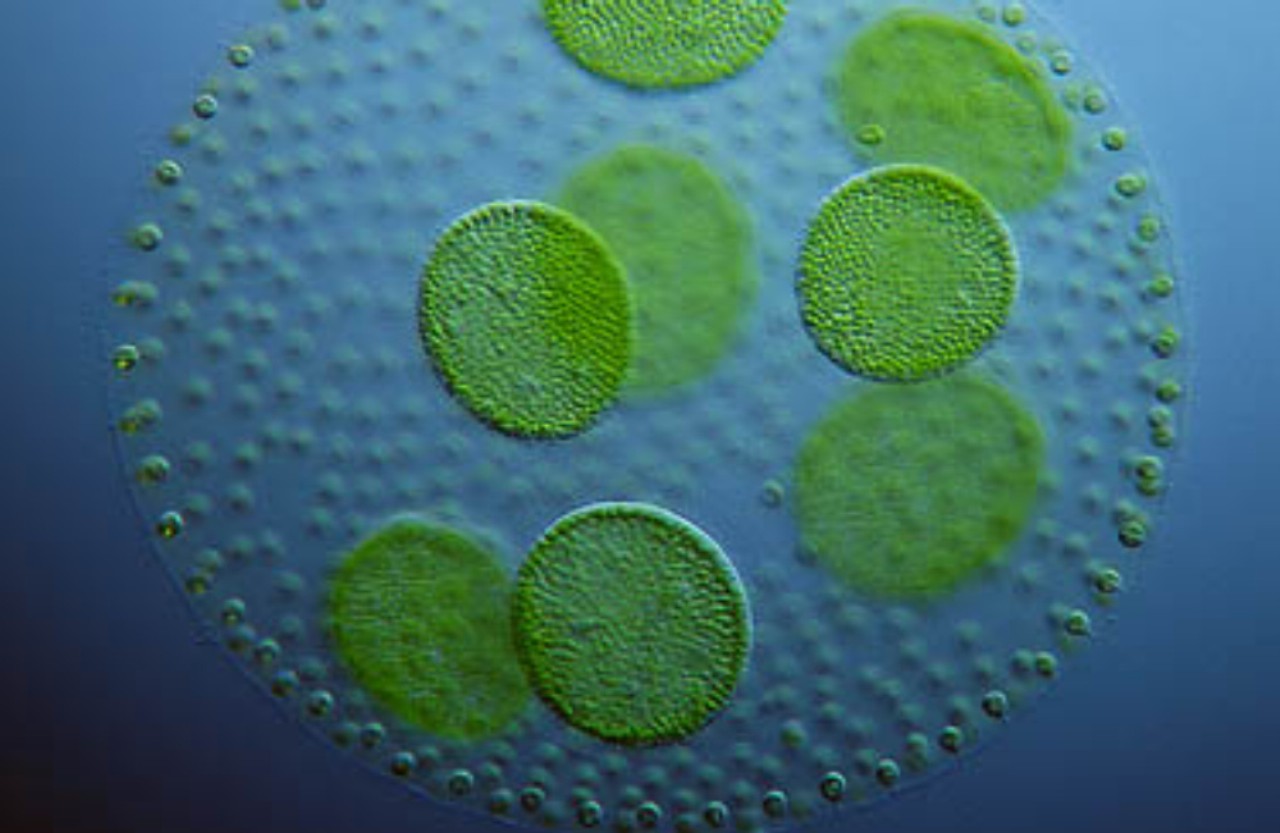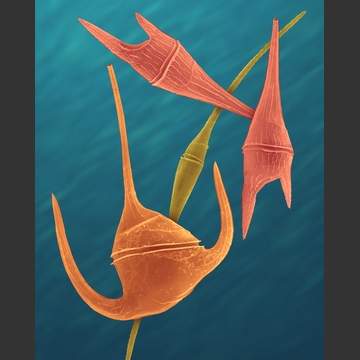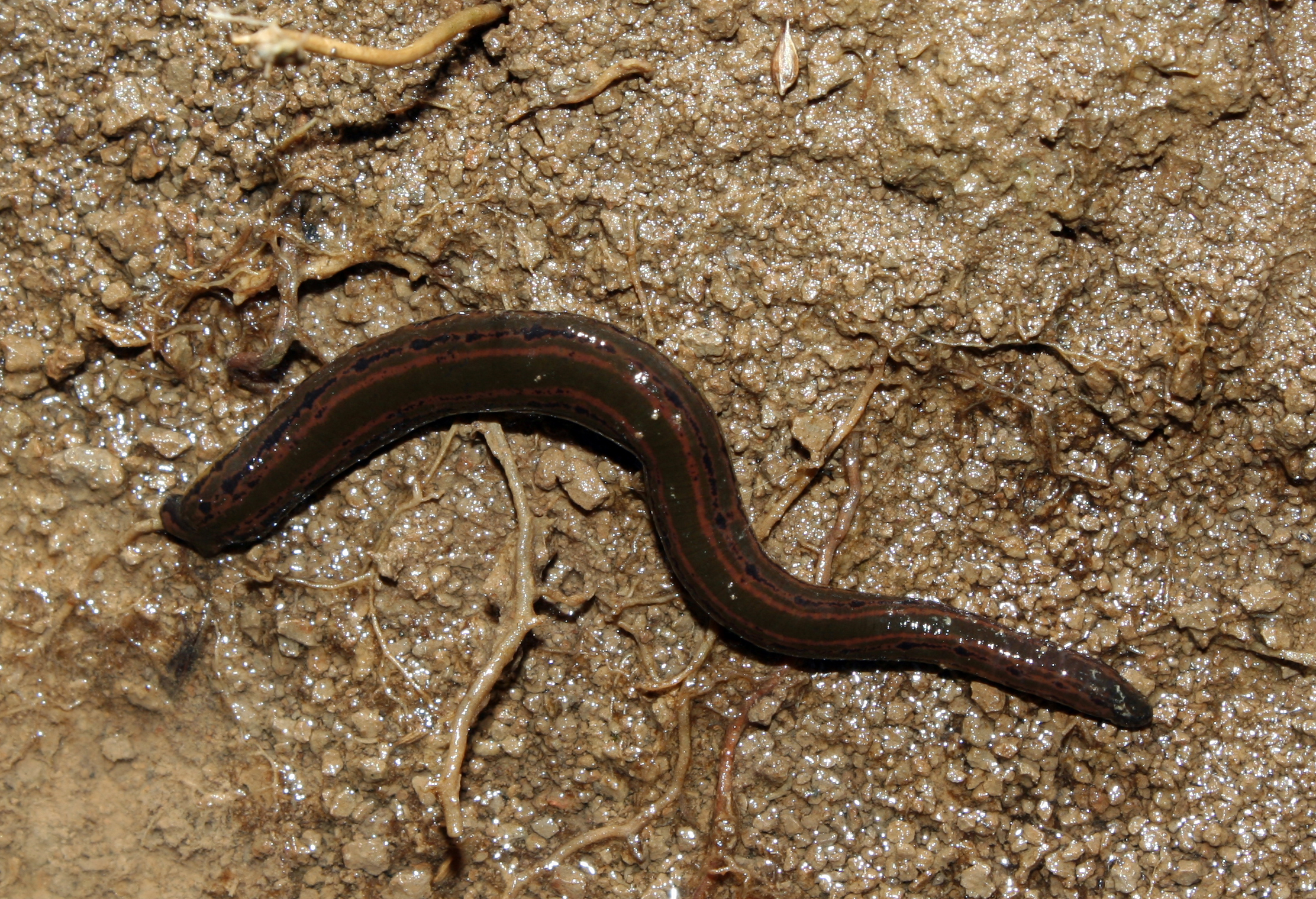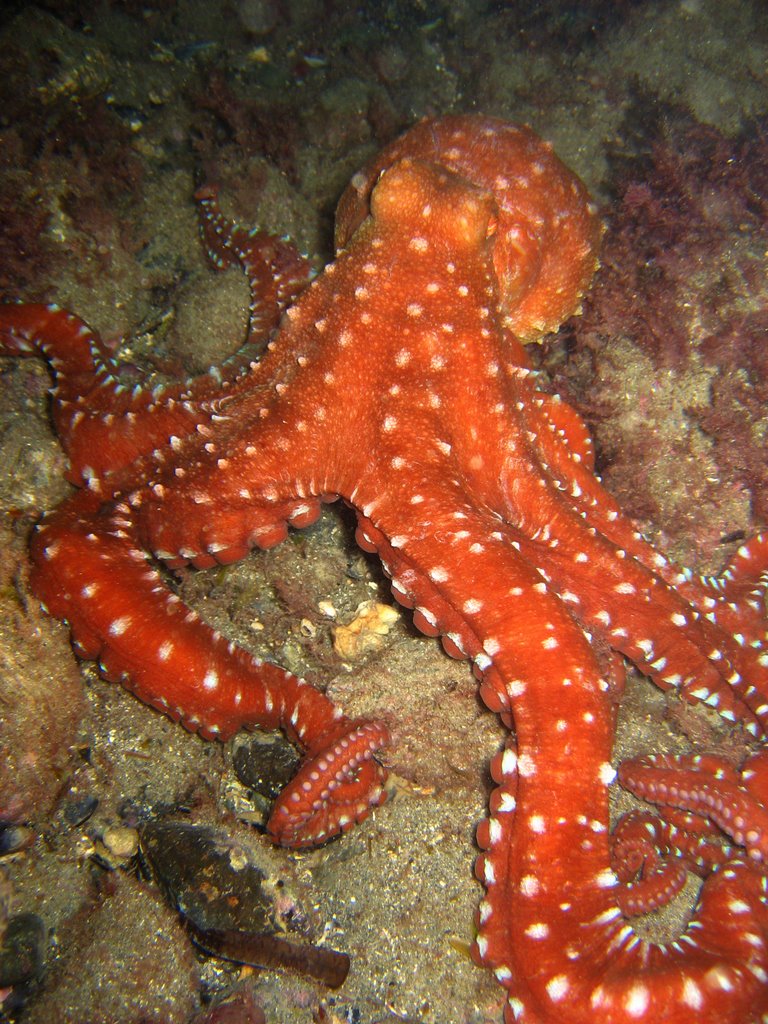Diversity of Life
Bacteria
Bacteria are Prokaryotic cells, that contain peptidoglycan, and don't have a membrane bound nucleus. Bacteria are resistant to antibiotics that affect Eukarya. Also, Bacteria contain rRNA, that is unique to Bacteria.
Eubacteria
Eubacteria are prokaryotic, and they are unicellular, they also have peptidoglycan in their cell wall, and they can be autotrophs or heterotrophs. Eubacteria reproduce asexually, and some Eubacteria are capable of motion, and most are pathogenic. Also, they aid in human digestion
Coccus: round
Staphylococcus aureus
Bacillus: rod

Lactobacillus
Spirillum: spiral
Spirilla Bacteria
Archaea
Archaea are Prokaryotic cells, that contain no peptidoglycan, and don't have a membrane bound nucleus. They also contain rRNA, that is unique to Archaea, and they are the oldest and simplest organisms on Earth, allowing them to live in extreme conditions such as highly acidic environments.
Archaebacteria
Archaebacteria are prokaryotic, and they are unicellular. they also contain unique lipids in their cell wall. They reproduce asexually, and can be autotrophs and heterotrophs. Archaebacteria are not capable of motion and can live in extreme conditions. Also, they help humans is digestion, and are important to the environment as they are decomposers
Anaerobic methanogens
Methanosarcina barkeri
Halophiles
Haloferax volcanii
Thermophiles
Alicyclobacillus acidocaldarius
Eukarya
Eukarya have eukaryotic cells, which are larger and have a membrane bound nucleus, making it more complex. Eukarya are sensitive to antibiotics that affect Eukaryotes. Not all Eukarya have a cell wall, but for those who do, they contain no peptidoglycan in their cell wall.
Protista
Protists are eukaryotic, and most are unicellular, they either contain pectin in their cell wall or don't. Protists can be autotrophs or heterotrophs, and they reproduce asexually through binary fission. Also, protists can either be capable of motion or not. Many of them are pathogenic, for example; malaria, and African sleeping sickness. Lastly, they only live in moist or aquatic environments.
Plantlike (Algae)
Contain chloroplasts, to carry out photosynthesis.
Phaeophyta
Movement Strategy: beating of long flagellum

Brown Algae
Chrysophyta
Movement Strategy: beating of two flagellum

Golden Algae
Rhodophyta
IMMOBILE

Red Algae
Euglenophyta
Movement Strategy: beating of flagellum

Euglena viridis (Algae)
Chlorophyta
Movement Strategy: beating of flagellum

Green algae
Pyrrophyta
Movement Strategy: spinning of two flagellum

Dinoflagellates
Animal-like (Protozoa)
Two ways to get food; Holozoic, engulfing their food through endocytosis and Saprozoic, absorbing predigested food,
Zooflagellates
Movement Strategy: beating of flagella

Leishmania
Sarcodines
Movement Strategy: pseudopodia "false feet"

Amoeba proteus
Ciliates
Movement Strategy: beating of cilia

paramecium
Sporozoans
IMMOBILE
Malaria (Plasmodium)
Fungi-like
Cannot make their own food, so they absorb nutrients from other living organisms.
Apicomplexa
IMMOBILE; Depend on other species to distribute them,

Plasmodium
Oomycota
Movement Strategy: beating of flagellum

Water Mould
Acrasiomycota
Movement Strategy: pseudopodia "false feet"

Slime Moulds
Myxomycota
Movement Strategy: pseudopodia "false feet"
Plasmodial Slime Molds
Fungi
Fungi are eukaryotic and can be uni or multicellular, although most are multicellular. Fungi contain chitin in their cell wall, and they are heterotrophs through absorption. They can reproduce asexually or sexually, and most are not capable of motion. Also, many are pathogenic, for example; athlete's foot, ringworm, and yeast infection. Lastly, they help the environment, because they are decomposers.
Zygomycota
- Conjugated fungi - reproduce asexually through the production of sporangiospores, which is the process of spore formation.

Rhizopus stolonifer
Ascomycota
- Sac fungi - reproduce sexually through the production of spores, which are inside a special elongated sacs, known as ascus. The two hyphal structures will mate and then the spores will be able to multiply.

Tuber
Basidiomycota
- Club fungi - reproduce sexually when two hyphae structures form a Bisidium, then the two haploid nuclei fuse to form a diploid zygote, the zygote undergoes meiosis to form two haploid nuclei, then these two undergo mitosis to produce 4 haploid nuclei, these 4 nuclei migrate into projections, finally, the projections develop into four separate haploid spores, and each of them has a single nucleus.

Agaricus bisporus
Deuteromycota
- Imperfect fungi - reproduce asexually, through the process of sporogenesis, which is the process of spore formation.

Hyphomycetes
Plantae
Plants are eukaryotic and they are multicellular, also they contain cellulose in their cell wall as well as chloroplast in the cells. Plants are autotrophs, meaning that they produce their own food through photosynthesis, and they can reproduce sexually and asexually, and they are not capable of motion. Plants are a major source of oxygen and food for others. Lastly, plants are a major source of medicine.
From water to land, Most plants adapted to:
• stand upright,
• Prevent moisture loss, through a waxy coating called a cuticle
• Stomata - which controlled exchange of gases
• conducting tissue for moving nutrients and
wastes
• Rhizoids (pre roots)
• Vascular tissues: Xylem (water and dissolved materials) and phloem (sugar transport)
• reproductive strategies for terrestrial
environments
Non Vascular
Bryophyta - mosses
There were two adaptations allowing Bryophytes to move from water to land: - The waxy cuticle and gametangia. - The waxy cuticle helped keep the plant moist, and not dry - The gametangia gave even more protection against drying out, which was mainly for the plant gametes.

Bartramia pomiformis
Vascular Seedless
Pterophyta - ferns
Adapted by gaining a thick cell wall, which provided support. As well as a storage for water and nutrients.

Pteris vittata
Lycophyta - club mosses
Similar to Pterophytes, Lycophytes also adapted by gaining a thick cell wall, which provides support. As well as a storage for water and nutrients.

Lycopodium annotinum
Vascular Seeded
Gymnosperms
All gymnosperms adapted by developing a thin waxy layer called a cuticle, which helped the plant prevent water loss, in order to stay hydrated
Coniferophyta - conifers
Pinus albicaulis
Cycadophyta - cycads

Zamia furfuracea
Gnetophyta - gnetophyta

Welwitschia mirabilis
Ginkgophyta - ginkgo

Ginkgo biloba
Angiosperms
Anthophyta - flowering plants
Anthophytes adapted to living on land by developing pores on their outer surface called stomata, these stomata allowed for exchange of gases with the atmosphere, therefore allowing plants to perform photosynthesis. Flowering plants also adapted by evolving to reproduce through pollination. As well as developing a strong stem which allowed the plant to stand upright. Finally, flower plants developed vascular system such as the root, which allowed for the absorption of water and minerals through the soil, as well as special storage for the nutrients in the shoot system.

Prunus serrulata
Animalia
Animals are eukaryotic and they are multicellular, also they don't have cell walls, and they are heterotrophs. Animals can reproduce asexually or sexually. Also, animals are capable of motion, and they can be vertebrates, and invertebrates. There are some parasitic worms, and humans greatly impact the environment.
Porifera
This is the simplest of the Animalia Kingdom, it developed a stomach, and it also uses its flagellated cells to create flow of water.
Spongilla lacustris
Cnidaria
This phyla contains species, who have radial symmetry, also species in this phylum developed a nervous system, as well as many defence mechanisms.

Cyanea capillata
Platyhelminthes
This phyla contains species, who have radial symmetry, also species in this phylum developed germ layers, as well as centralized nervous systems.

Clonorchis sinensis
Nematoda
Species in this phylum, developed a complete digestive tract, also species in this phylum are pseudocoelomate.
Trichinella spiralis
Annelida
Species in this phylum, display segmentation, also species in this phylum developed closed circulatory systems, and species in this phylum are coelomate.

Hirudo medicinalis
Mollusca
Species in this phylum a mantle and foot, also species developed complex organs, as well as advanced organ systems.
Gastropods

Cornu aspersum
Bivalves

Cerastoderma edule
Cephalopods

Callistoctopus macropus
Echinodermata
Species in this phylum have radial symmetry, also species developed lot's of nerves. These nerves extend to the arms, as well as around the mouth. Also, species in this phylum are deuterostome

Cucumaria miniata
Arthropoda
Species in this phylum have developed jointed legs, as well as an exoskeleton made of chitin. Species in this phylum have also developed many systems, and species have internal airways.
Chelicerate
Arachnida

Loxosceles reclusa
Merostomata

Limulus polyphemus
Pycnogonida

Nymphon gracile
Hexapoda
Insecta

Aegis mellifera
Entognatha

Folsomia candida
Crustacea
Malacostraca

Pachygrapsus crassipes
Maxillopoda

Lepas anatifera
Branchiopoda

Daphnia magna
Ostracoda

Macroscapha falcis
Myriapoda
Chilopoda

Scutigera coleoptrata
Diplopoda

Narceus americanus
Symphyla

Scutigerella immaculata
Pauropoda

Pauropus huxleyi
Chordata
Species in this phylum are more complex, than others in the Animalia Kingdom. This is because species in this phylum have Dorsal nerves, and Notochords. As well as paired gill slits, and a post anal tail. With these attributes appearing only at development or throughout the life, these traits make the species in this phylum the most complex.
Tunicates
Ascidiacea

Polycarpa aurata
Larvacea

Oikopleura dioica
Thaliacea

Pyrosoma atlanticum
Cephalochordates
Leptocardii

Branchiostoma lanceolatum
Vertebrates
Agnathans (jawless fish)
Gnathostomata (jawed animals)
Adaptations to Terrestrial Life
Species in this class have adapted and developed jaws, their skeletons are also made entirely out of cartilage. Species in this class have also developed an electrosensor and a lateral line of organs, in order to sense other nearby animals.
Chondrichthyes

Carcharodon carcharias
Species in this class adapted and developed scales and a bony skeleton, in order to ensure a stronger body. They also developed a swim bladder to help control density. Lastly, the operculum was developed in order to protect the species' gills.
Osteichthyes

Symphysodon discus
Species in this class developed and adapted to terrestrial life by being able to live on water and land, and have moist skin. Also, having both gills and lungs.
Amphibia

Dendrobates leucomelas
Species in this class developed, to be able to only live on land, therefore breathing air. Also, they developed different modes for movement, as well as for defence. Lastly, Reptiles adapted by developing an amniotic egg.
Reptilia

Varanus komodoensis
Species in this class have feathers that help keep them warm, hollow bones which help make Aves lighter, due to wings Aves have the ability to fly. Also, Aves adapted by developing an amniotic egg.
Aves

Phalocrocorax atriceps
Species in this class have fur and/or hair for insulation. Also species in the class Mammalia have developed advanced organ systems, which help to function more efficiently and effectively. Lastly, Mammals adapted by developing an amniotic egg.
Mammalia
Monotremes
Monotremes are the only mammals, where the females lay eggs. This is a form of sexual reproduction.

Ornithorhynchus anatinus
Marsupials
Marsupials give birth to a fetus, which climbs up to the mother's pouch form the birth canal, right after birth. This ensures more protection for the zygote, which makes it superior, as well as more advanced than monotremes.

Macropus rufus
Placentals
Placentals have a child in the female mother's womb, where the nutrients get carried to. This provides more protection for the developing child, as well as the ability to escape danger, which makes it more superior, and advanced than marsupials.
Pholidota
The species in this order are well adapted to digging, due to their claws. As well as their long snout, and thick tail which differentiate them from other orders. Lastly, species in this order, have a very long tongue, this allows them to reach for ants that are deep in the ground.

Smutsia temminckii
Chiroptera
These species modified forelimbs support a wing membrane, they also have small eyes, developed ears; that allow for better hearing. Lastly, the size of their bones and muscles, differ greatly than other mammals.

Myotis lucifugus
Primates
Primates have a larger brain, this allows primates to rationalize, and think through situations, without impulsive thoughts. Also, they can see better than other species, but at the cost of their sense of smell.

Pan troglodytes
Legend
Diversity of Life
Domain
Kingdom
Phylum
Connecting words / Groupings
Information Bubble
Sub Phylum
Super Class
Class
Order

